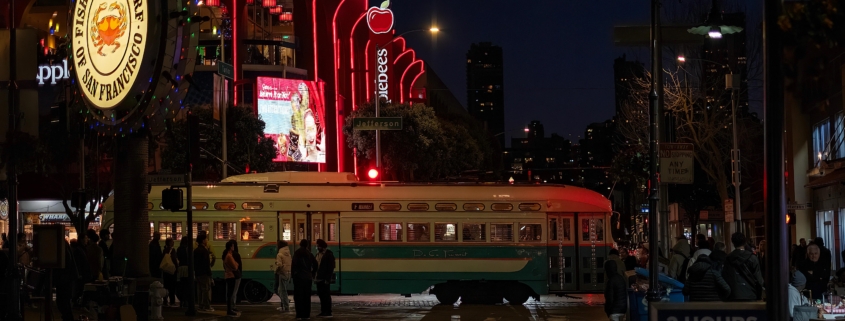Applebee’s And The Loss Of Neighborhood
Local continues to be a driver for customers. Grocery stores like Publix and Whole Foods label items that are locally produced. Farmers’ markets are a draw for shoppers wanting produce that have not accrued a lot of air mileage. Craft fairs and art shows emphasize local creativity and talent.
One of the strongest drivers of localism is the neighborhood. Neighborhoods are ecosystems of individuals belonging to unique communities. Seattle, WA, is a perfect example of how a big city thrives from its diverse neighborhoods such as Fremont, Green Lake, Ballard, Capitol Hill, Wallingford, Queen Anne, Belltown, Phinney Ridge, University District, Ravenna. You are where you live.
We tend to think of neighborhoods as places. But, actually, neighborhoods are more about the people than the place. It has always been this way. The word neighborhood comes from two Old English words: Neah meaning near in time, place, relationship and Gebur meaning dweller. Neighborhood is all about those who dwell near to you. Neighborhood is about a casual, social relationship where you control how much interaction you wish to have with like-minded others.
Neighborhoods provide friends and acquaintances. There is human contact. Neighbors think about themselves as living in their own universe but appreciate communicating with friends who are nearby. Neighborhoods are people who see themselves as unique but want a sense of belonging. I want to be different just like all of my neighbors.
One of the most extraordinary things about neighborhoods is the places where people gather. Along with institutions such as churches, synagogues, libraries, schools, ball fields, skating rinks and recreation facilities, there are neighborhood restaurants.
The Wall Street Journal recently wrote about the power of neighborhood restaurants. The sub-title of the article explained that the neighborhood restaurant “… offers residents a sense of comfort and belonging – and visitors a warm welcoming into the historic communities they serve.”
The article states that in the US, there is a new proliferation of neighborhood eateries across the nation that “serve the needs of their neighbors with a generous dash of nostalgia baked in.” With the neighborhood restaurant, there is a preservation of the local culture wrapped up in both dining and socializing.
You may not know this, but Applebee’s began this way. And, for years, it was a neighborhood restaurant. It was your neighborhood bar and grill. No oven. Applebee’s served good food and community with familiar, friendly service at affordable prices. As a patron, you felt comfortable and relaxed. You felt welcomed. You felt as if you were part of a family. You joined in friendly conversation. You left with a smile and warmth. Applebee’s was a neighborhood restaurant.
And for years, Applebee’s advertising reminded audiences that Applebee’s was a neighborhood place for good food and drink generating local conviviality. Even as Applebee’s segued into food-item-plus-price communications, the brand-business still gave lip service to its provenance by closing with a line about eating good in the neighborhood. However, sadly, communications shifted to a restaurant in the neighborhood, not a neighborhood restaurant.
There is a difference between being a restaurant in the neighborhood and being a neighborhood restaurant. Of course, affordable food is important. But, neighborhood is an attitude, not a location; neighborhood is a mindset not a venue; neighborhood is people not a price point. Neighborhood is human contact. Neighborhood denizens feel special and unique belonging to the neighborhood; neighborhood confers identity.
At the same time, neighborhood generates camaraderie and conversation and belonging. Food and beverage are conduits for generating the neighborhood camaraderie. Telling customers it is all about the food is wrong. It is all about the neighborliness that allows people to engage.
Being local, being a neighborhood restaurant has such power. It is difficult to believe that Applebee’s would ditch this incredible provenance for a price-product message, as if they were selling a commodity. Customers want to know and feel the demonstration of neighborhood. Customers probably do not gain this neighborhood understanding from the current advertising.
Anyway, Applebee’s focus these days is on food-item-for-a-price: aka deals. The eating-good-in-the-neighborhood reference is currently not even in the ad copy, at least not in the all-you-can-eat for $14.99 ads. Right now, the implication is Applebee’s is a place with deals. Nothing about the neighborhood vibe.
Further, marketing data show that consistent emphases on deals rather Communicating “deals-all-the-time” sends a signal. Price can signal quality or lack of quality perceptions.
A recent issue of the trade bible, Restaurant News, contained a bespoke survey on people’s favorite restaurants. Applebee’s was not on any of the lists. Those restaurants on the list, regardless of tier, focused on delivering service unique to the brand-business’ brand promise. The language is very similar to what Applebee’s used to stand for in customers’ minds.
Applebee’s used to be your neighbor. Applebee’s was your neighbor. This meant that Applebee’s servers made friends at every table. “I’m your neighbor” meant that Applebee’s designed food and beverage that would bring people together. “I’m your neighbor” meant that Applebee’s was a home base for conversation, entertainment and engagement. “I’m your neighbor” meant that Applebee’s prices were perceived to be best value because these prices allowed neighbors to visit regularly. And, the prices allowed for groups of families, friends and neighbors to share conversations, generating conviviality. “I’m your neighbor” meant that Applebee’s was connected to communities and connected to neighbor-to-neighbor. Applebee’s was social media.
In a world where we spend time disconnected from actual community; where it takes effort to join with others in the neighborhood, Applebee’s should be a neighborhood restaurant again. Applebee’s brand-business had an evergreen, appealing and still relevant, even more so, brand-business promise. Its provenance was so engaging and encouraging. Brand-businesses would do anything to have such a powerful provenance. Let’s hope that Applebee’s truly returns to its core.



